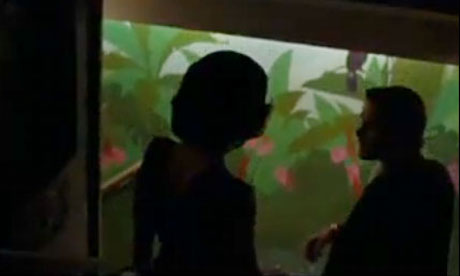 For me, the tracking shot has always been my favorite camera movement. In our current film culture, which values incessant quick cuts, there is something to be said about being able to keep the camera running for an extended period of time. It is a testament to this that tracking shots are usually the ones people remember, and the one type of shot people are always making lists about.
For me, the tracking shot has always been my favorite camera movement. In our current film culture, which values incessant quick cuts, there is something to be said about being able to keep the camera running for an extended period of time. It is a testament to this that tracking shots are usually the ones people remember, and the one type of shot people are always making lists about.
Ask anyone devoted to film what their favorite tracking shot of all time is, and you will get any number of answers. Some might point to the opening of “Touch of Evil” which shows us the planting and eventual explosion of a bomb in one breathless take. Others might point to the car chase sequence of “Children of Men,” which is so powerful because the camera never cuts away from the violence, and therefore the viewer never knows what’s going to happen next. However, I believe the best of them all is the famed Copacabana shot from “Goodfellas.”
This single shot is equal parts thrilling and entertaining to watch. For those of you who haven’t seen “Goodfellas” yet (and if you haven’t turn off your computer and go watch it right now), it is the true story of Henry Hill (Ray Liotta), an Irish-Italian hoodlum who finds great success as a small time mobster in the 50s and 60s, but then loses it all after a string of misjudgments and bad decisions. The movie is split up into two acts: the first act is a glorification of a life of crime and taking the easy way out, and the second half is a condemnation of this exact lifestyle.
This shot takes place during the movie’s first act, in which Henry takes Karen (Lorraine Bracco) on their first date together at the Copacabana. It goes on for around three minutes, an impressive amount of time to go on without a single cut. The lingering camera gives off the vibe that an invisible third party is following Henry around and documenting his life. This third party may know the strife that lies ahead but for know, focuses on the glamour.
The shot starts off on the street, where Henry refuses to leave his car in a garage, because he so loathes the idea of having to wait for it. As the camera continues to follow Henry and Karen across the street, they cut through the long line waiting to get in and go approach an underground entrance. Once the doors swing open and they enter, Karen has officially entered the criminal underworld. And this is a hard place to ever come back from. If this scene represents a descent into hell, a selling of the soul, then Henry and Karen are like the honorary king and queen.

This scene represents what will be the apex of Henry’s mob career. At the Copacabana, he doesn’t have to wait for a table: the Copacabana brings the table to him. Once the tracking shot ends and Henry and Karen have entered the restaurant, the camera doesn’t stop there. Perhaps Scorsese felt that cutting this shot would have ruined this scene, which feels like a big encapsulation of a major moment. Most people’s greatest moment of success might be when they make a fortune or get to run their organization. For Henry, that greatest moment is when he gets to avoid waiting in line. It’s all part of Henry’s plan to be as far from an ordinary schmuck as possible.
What fascinates me most about this is not just what happens onscreen, but what must have happened behind the scenes as well. It is hard to even imagine how difficult this must have been for Scorsese, cinematographer Michael Ballhaus, and all of the actors and extras in the scene to shoot and coordinate. It feels like every last action had to be so carefully plotted out and that one false move could have ruined everything. Every movement of every chef and every waiter must have been coordinated to a T. However, there are still some tiny moments that make me believe that it went off the script a few times. When Henry bumps into a plate, his reaction seems too genuine to have ever been planned.
In that lies the beauty of “Goodfellas,” the reason that I (and most other viewers) watch the movie again and again: it is so obsessively crafted, yet so loose and free. We are not meant to simply watch the lives of these gangsters and their families, but become a part of it. It invites us into their lives in a way that even “The Godfather” couldn’t do. The viewer is probably smart enough to know the dangers of entering the mob. However, for this one moment, getting into the Copacabana with a front row seat of the show seems pretty damn well worth the risk.
Watch the scene, with some interesting commentary from cast and crew here.


